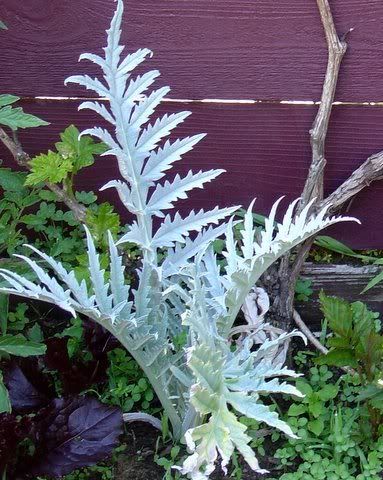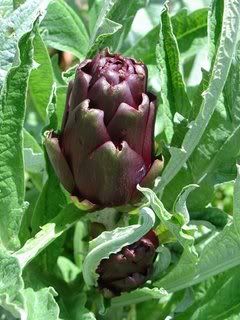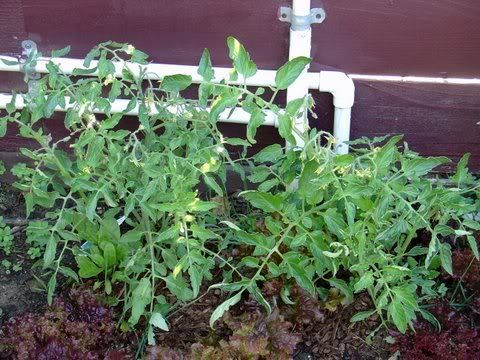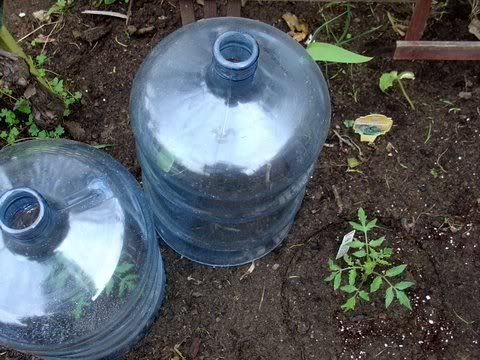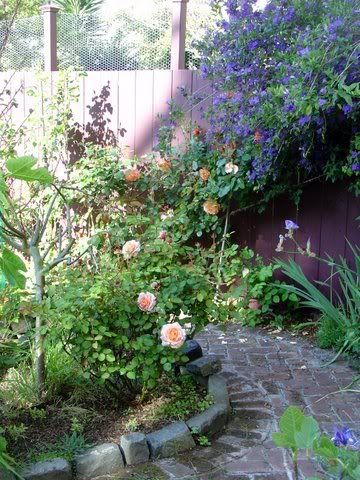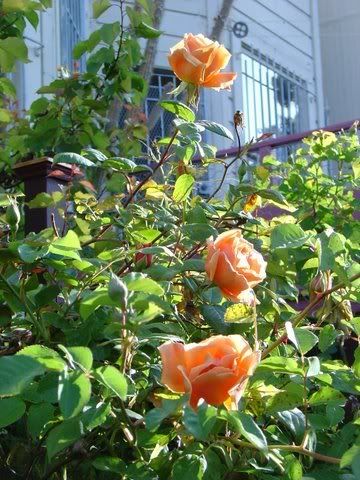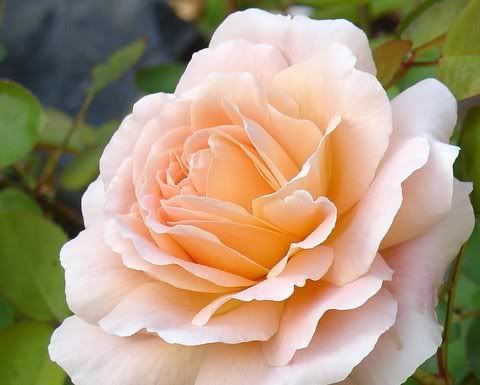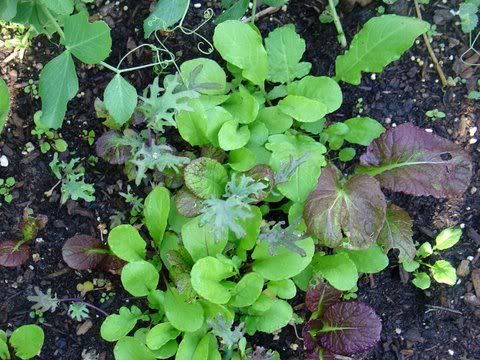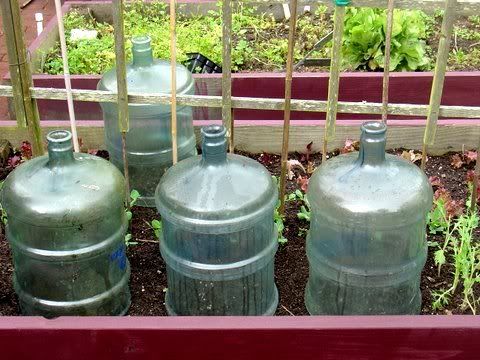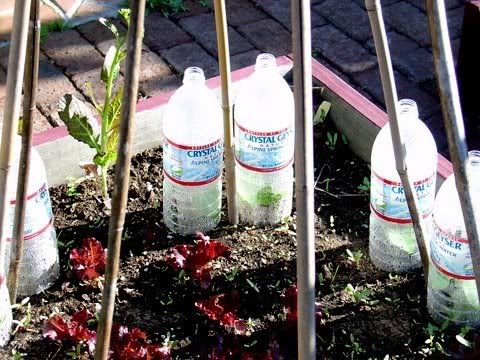
Liter sized plastic bottles are so useful in the garden. After planting pole beans and setting up the tepee trellis for them to climb, it only took a week or so for the beans to germinate. When they started getting their first true leaves, it was apparent that something was eating them. I haven't seen many snails this year, but there are some slugs and earwigs around. To create a barrier until the plants got stronger, I cut out the bottom of the bottles and placed them around the individual bean plants. Forcing them into the dirt by one inch gave them enough stability to withstand being blown over by the wind. The added heat should help the plants grow faster, creating an additional benefit.
To economize on space, I planted some volunteer Merlot and Lollo Rosso seedlings in the center of the tepee. They should be mature by the time the beans grow tall and full enough to shade them completely. I find most leafy greens do well and resist bolting in semi shady areas. It has also been my experience that woody herbs, such as rosemary and sage, when planted in shady areas have more intense fragrance, and therefore more flavor.
